Brazil aspires to win the Copa América for the tenth time in their history by advancing from a group that includes Colombia, Costa Rica, and Paraguay. After a tough start with a draw against Costa Rica, Brazil regained their balance with a 4-1 victory against Paraguay.
In a not-easy situation, Brazil will face the group leader, Colombia, tomorrow in the third and last match of the group stage. Colombia have 6 points after winning the first two matches, Brazil is in second place with 4 points, Costa Rica has 1 point, and Paraguay is at the bottom without any points.
On the other hand, Brazil’s bright spot could directly contribute to their going far in this tournament: their defending scheme during set-pieces, especially corner kicks. In this tactical analysis, we will dissect Brazil’s tactics in defending corners, showing all of its strengths and how difficult it is for opponents to get through it because its hybrid defending system protects the six-yard well. We will also mention the probable weaknesses in this scheme, showing how opponents can exploit them.
The strengths of the main scheme
Starting with their main defending scheme, they follow a modern hybrid system that tries to merge the advantages of zonal marking and man-marking defending systems, giving priority to the zonal system. Below, you can find that they assign six zonal defenders, two man markers, a short-option defender, and a rebound defender.
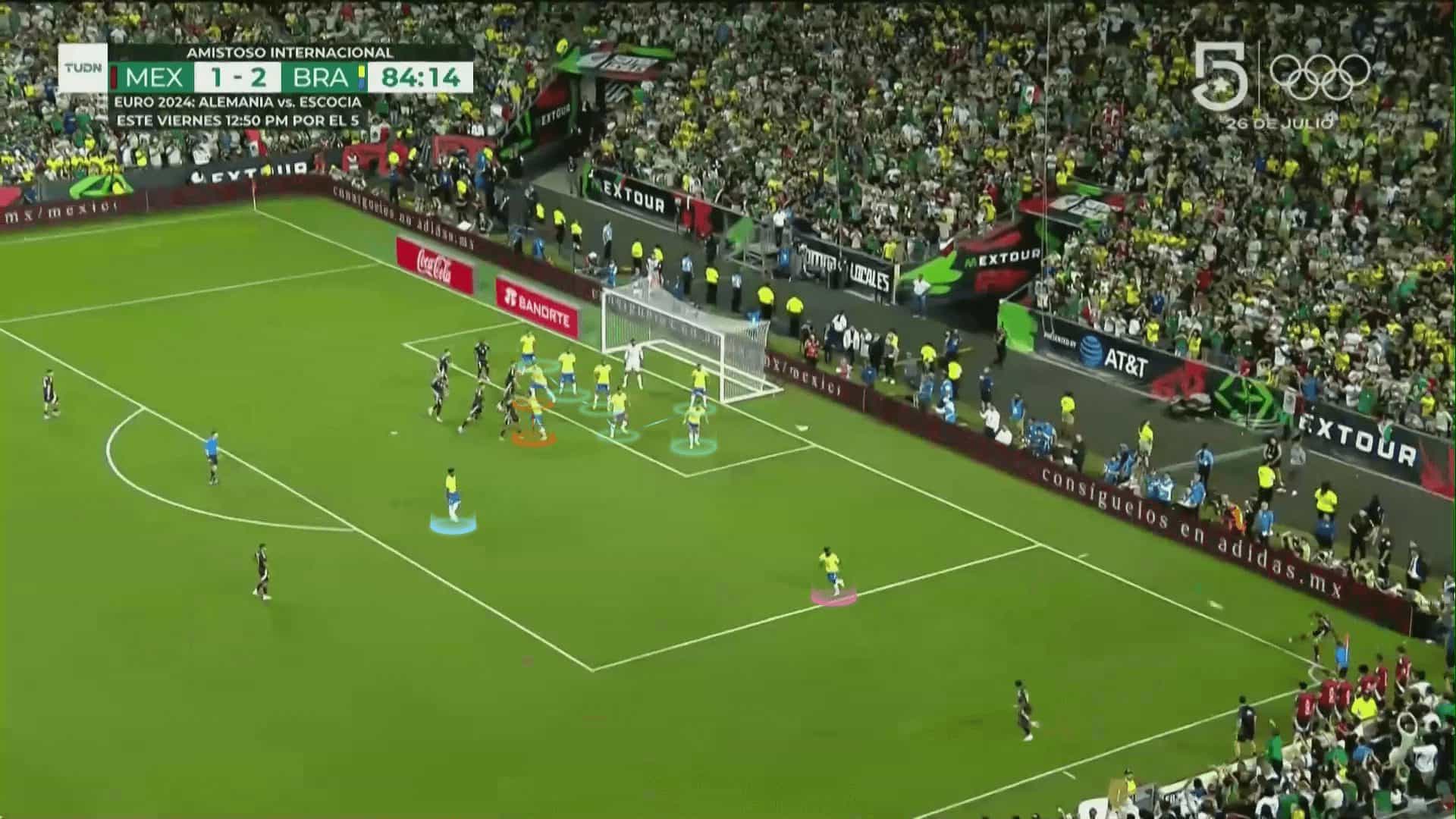
The same scheme is applied against out-swing crosses but with a few differences. First, the zonal line takes more steps forward due to the expected path of the cross, while the second change is the position of the goal defender who sticks to the post in case of in-swing crosses; he pushes forward vertically to protect the area in front of the near post after the six-yard, as shown in the photo below.
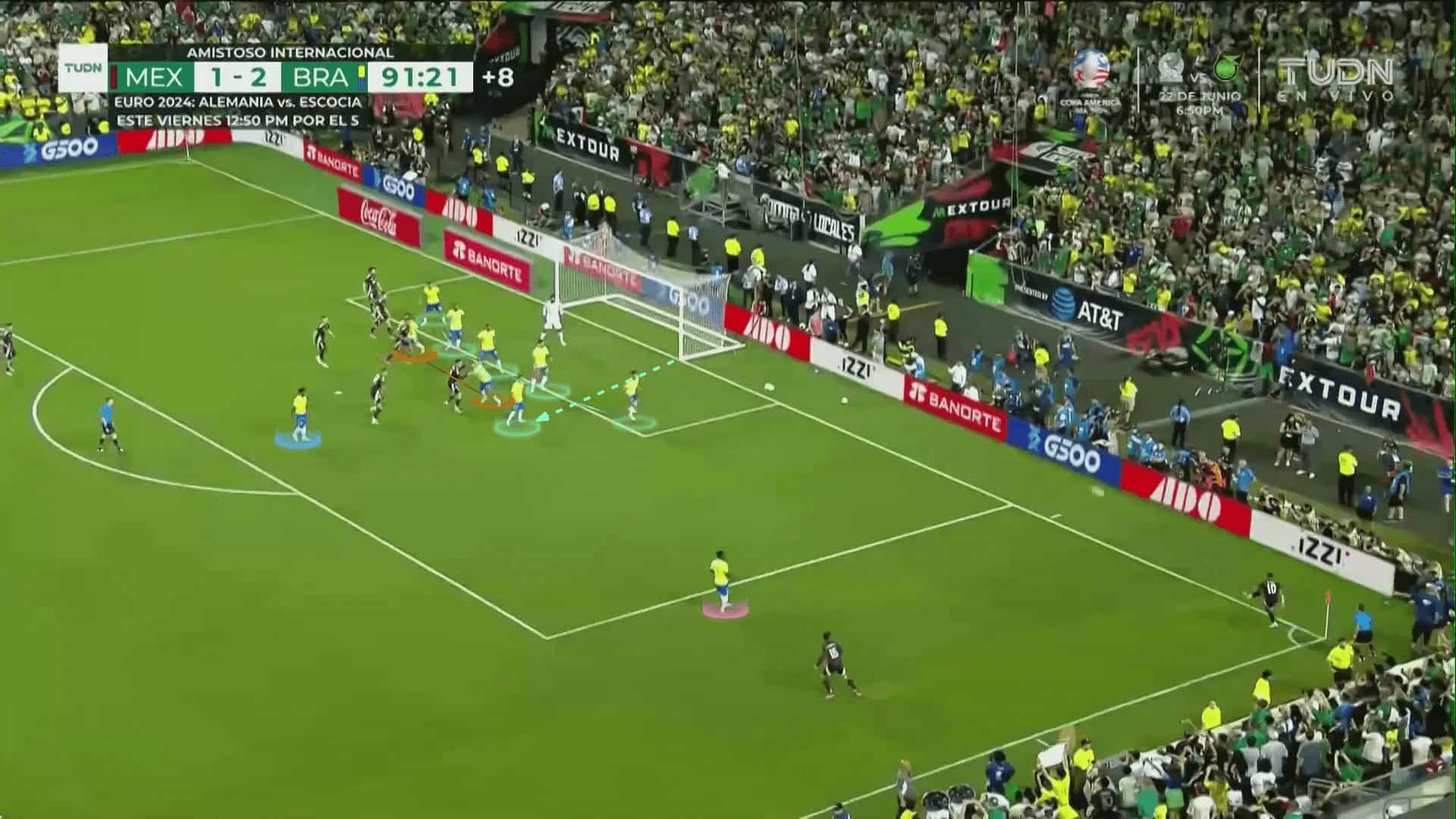
As we know, the scheme’s kind and the number of its components aren’t the only important things. It’s a good and essential base, but it’s still the base. We should know the defenders’ behaviour in different situations, meaning that we will look for their answers when they are put against different questions. Let’s start and test the solidity of this scheme, imagining that we are the opponent analysis staff looking for the best way to attack them.
At first, we wonder who will go to have the first touch and clear the ball against flicks in the area between the near post and the vertical edge of the six-yard. Do they ask one of the first two zonal defenders, aligned to the near post, to go, as many teams do? The answer is no; they prefer to put an additional zonal defender in front of the two defenders aligned to the near post, making him free to measure the ball in the air, scanning around him to know if any opponent attacks this area and choosing the timing to chase the ball in the air getting the first touch preventing any possible flicks, as shown in the two photos below.
This additional zonal defender reaches the ball quicker than the two behind him, cutting less distance while also making them not be forced to leave the goalmouth to chase the ball, which leaves some dangerous gaps on the near post, as happens with many teams.
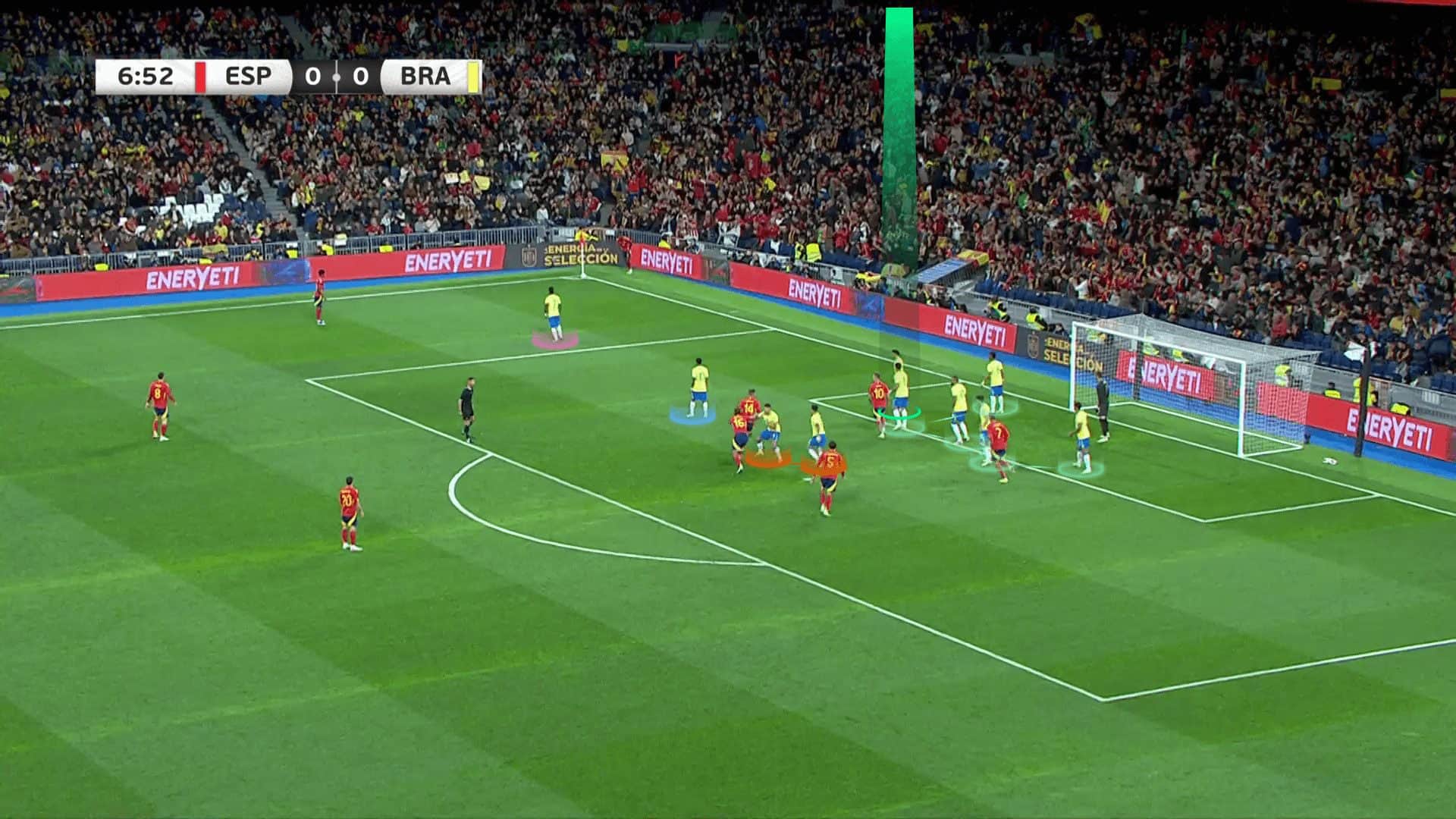

Another question: What will happen if any good attacker can escape from their man marker or be free from the first reaching the six-yard free from man marking? The answer is simple: if we manage to do that in any way, the six-yard is so crowded with their best zonal defenders, which means that targeting the six-yard is difficult, as shown below because if you are one of the two best attackers, you should find a way to escape from your man marker and then, to overcome the zonal defender at the area you target. So, if you want to attack them, you should have a coherent routine with particular roles, not only some ideas, and this is what we will dissect.

Two-taker manipulation
As we have mentioned, they cleverly change the zonal-line position in case of out-swing crosses due to the predicted path of the cross; the one who stands on the post pushes forward vertically to protect the area in front of the near post after the six-yard, as happens in the two photos below.

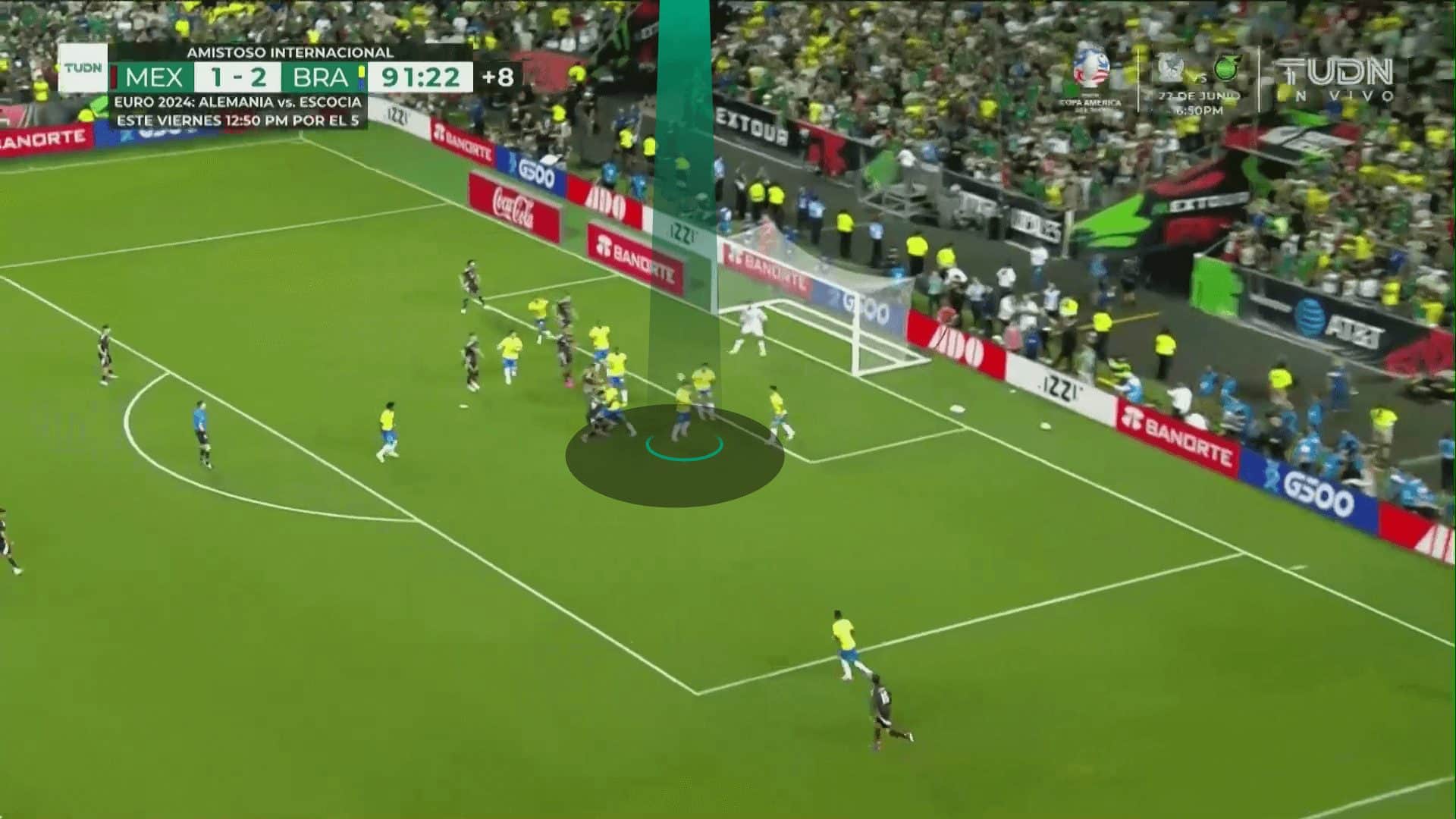
Good analysts and coaches learn from others, so let’s see how Mexico dealt with that issue later in the same match, which made them score a goal in the last minutes. Mexico’s main idea was to use two takers; one is an in-swinger, while the other is an out-swinger. This made them unpredictable, which forced Brazil to defend with the in-swing strategy, putting the normal defender on the near post, which means that when Mexico plays a sudden out-swing cross, the area they targeted above will be empty. Even if this defender runs, it’s difficult to reach on time.
So Mexico uses six attackers in the box against only two man markers, which means that they will have four attackers free from man-marking. They target a free one in yellow. Thus, the first part of the plan is already done by using numerical superiority against man markers, but let’s go to the second photo to learn the second part, which is making sure that a zonal defender won’t occupy the targeted zone.
The first pink attacker goes to the near post, between the first two zonal defenders, to make sure that our green defender won’t chase the targeted yellow attacker in case he can reach the area in time. Two white-arrowed players then stand in front of two zonal defenders to take their attention and frame the goal, so the targeted zone is ready, as in the third and fourth photos.
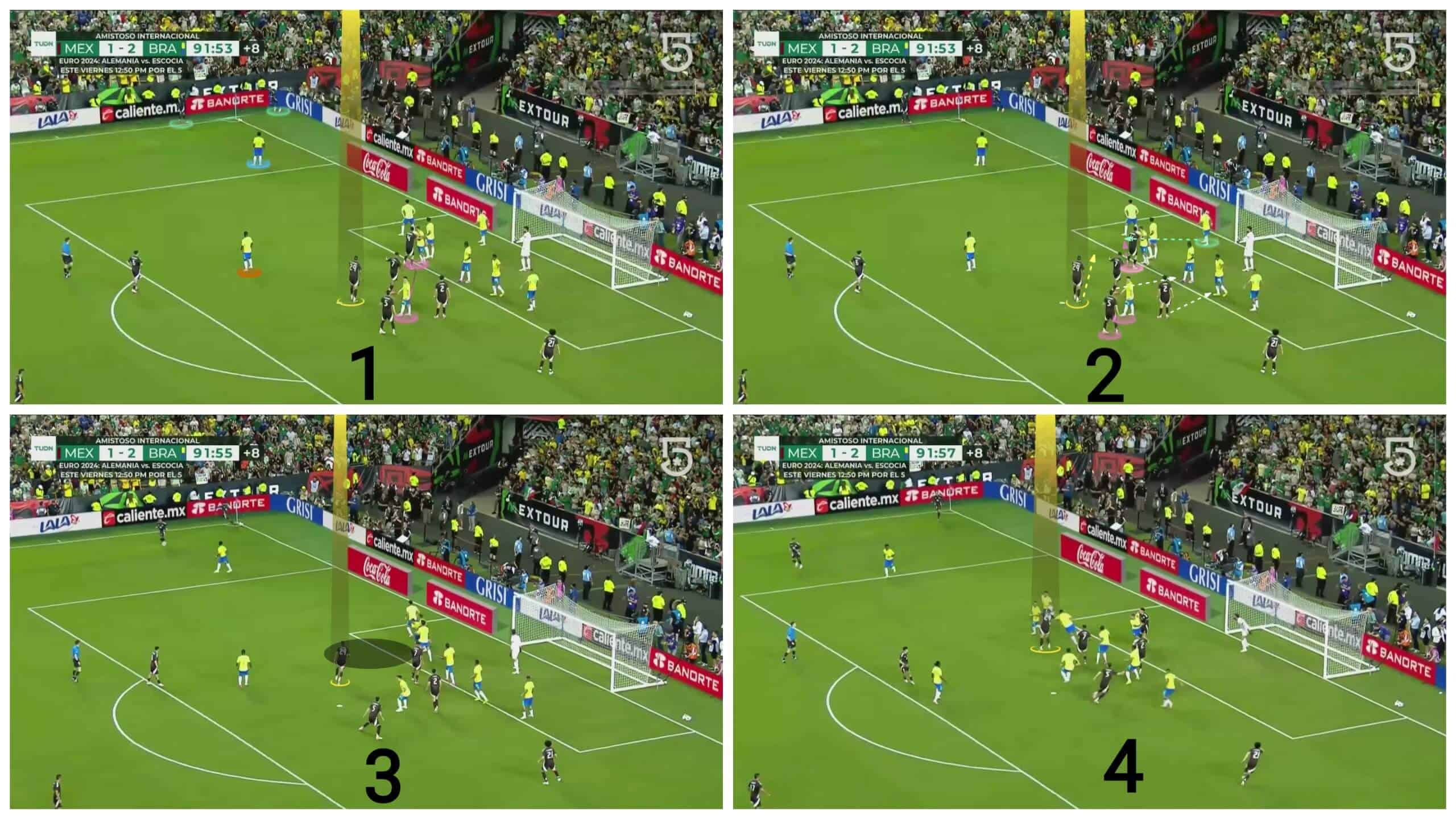
In the photo below, the goalkeeper saves the ball brilliantly. At the same time, the principle of framing the goal is used to be ready in case the goalkeeper punches the ball wrongly or in case the targeted player can’t control the ball well, so he flicks the ball instead of shooting it.

After that, they faced Paraguay in this current tournament, and when they were asked the same question, they chose the out-swing scheme, not the in-swing one, which may be because of Paraguay’s usual use of out-swing crosses, as already happened in the photo below. This made them good, but leaving this large distance between the near post and the zonal defender while having a probability of conceding an in-swing cross is so risky. Many teams may target the goal directly with a sudden in-swing shot or target this empty area with an out-swing cross using many tactics.

Here, Paraguay used a different strategy, which could have been meant for that reason or not, but it sounded the alarm of danger to Dorival Júnior’s side. In the photo below, Paraguay tries to exploit this large distance and the goalkeeper’s position, expecting an out-swing cross. The two takers stand on the ball, but suddenly, the in-swinger receives a short pass quickly before Brazil gets organised.
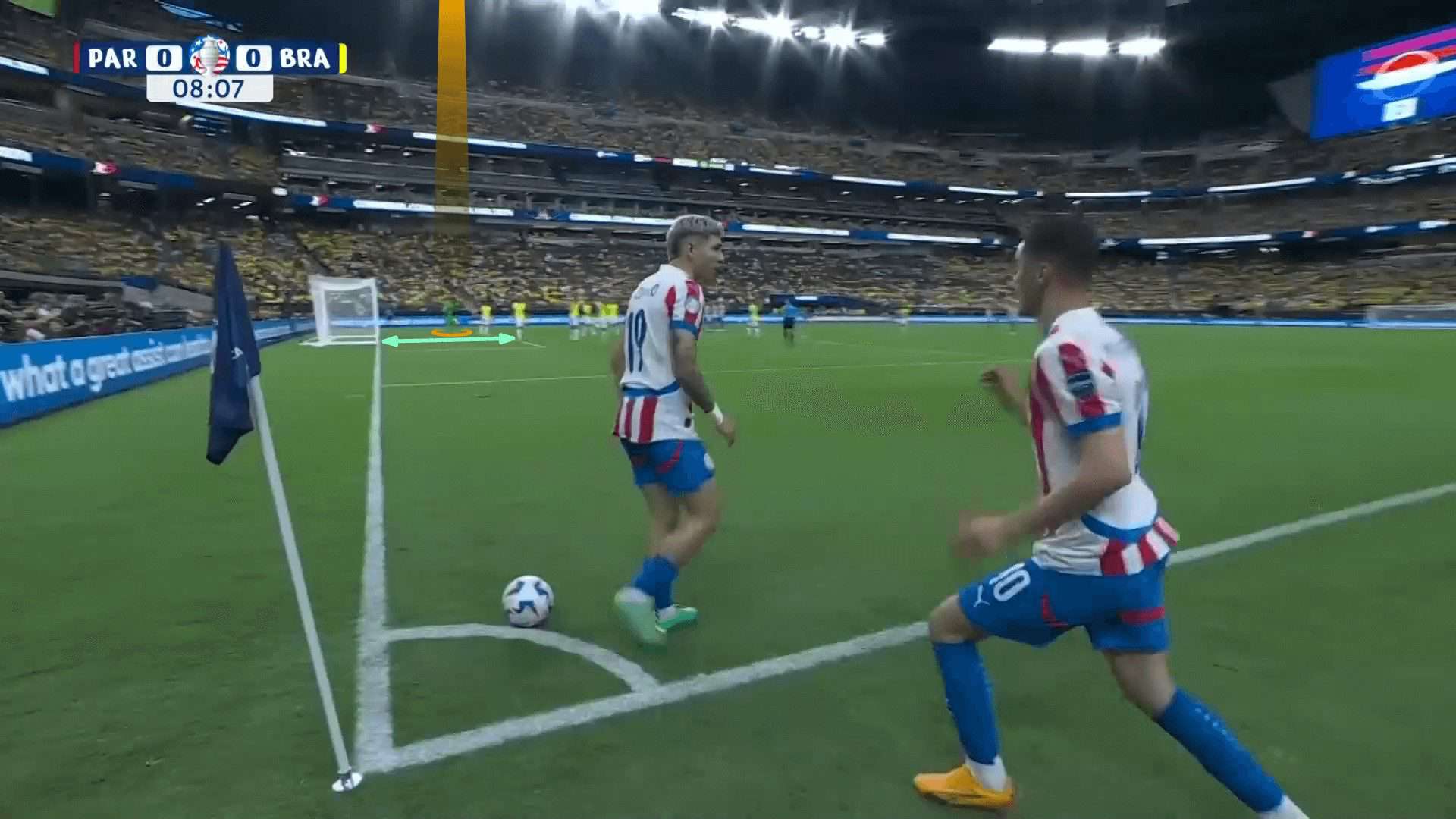
He receives the ball, dribbles quickly, and tries to shoot at that empty angle to surprise the goalkeeper, but the ball goes outside, as shown in the two photos below.

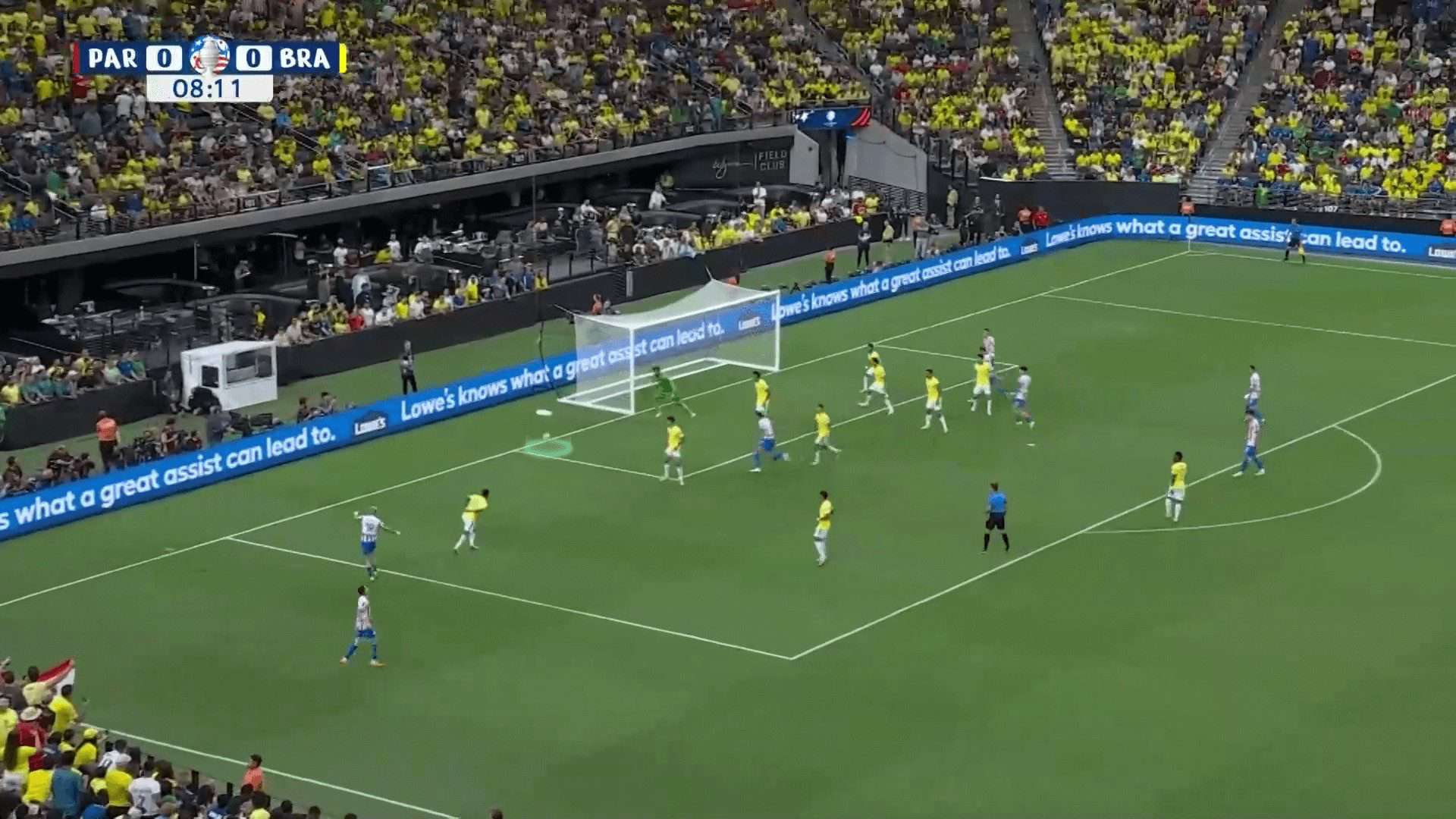
Short and rebound defenders’ behaviour
The second probable weakness is their unclear reference while defending the rebound zone in different cases. Let’s start with the first and the least dangerous case in which the opponent has a short-option attacker.
As shown below, they may dispense of the additional zonal defender, asking him to push forward to help the main short-option defender in pink while asking the rebound defender in blue to still do his duty.
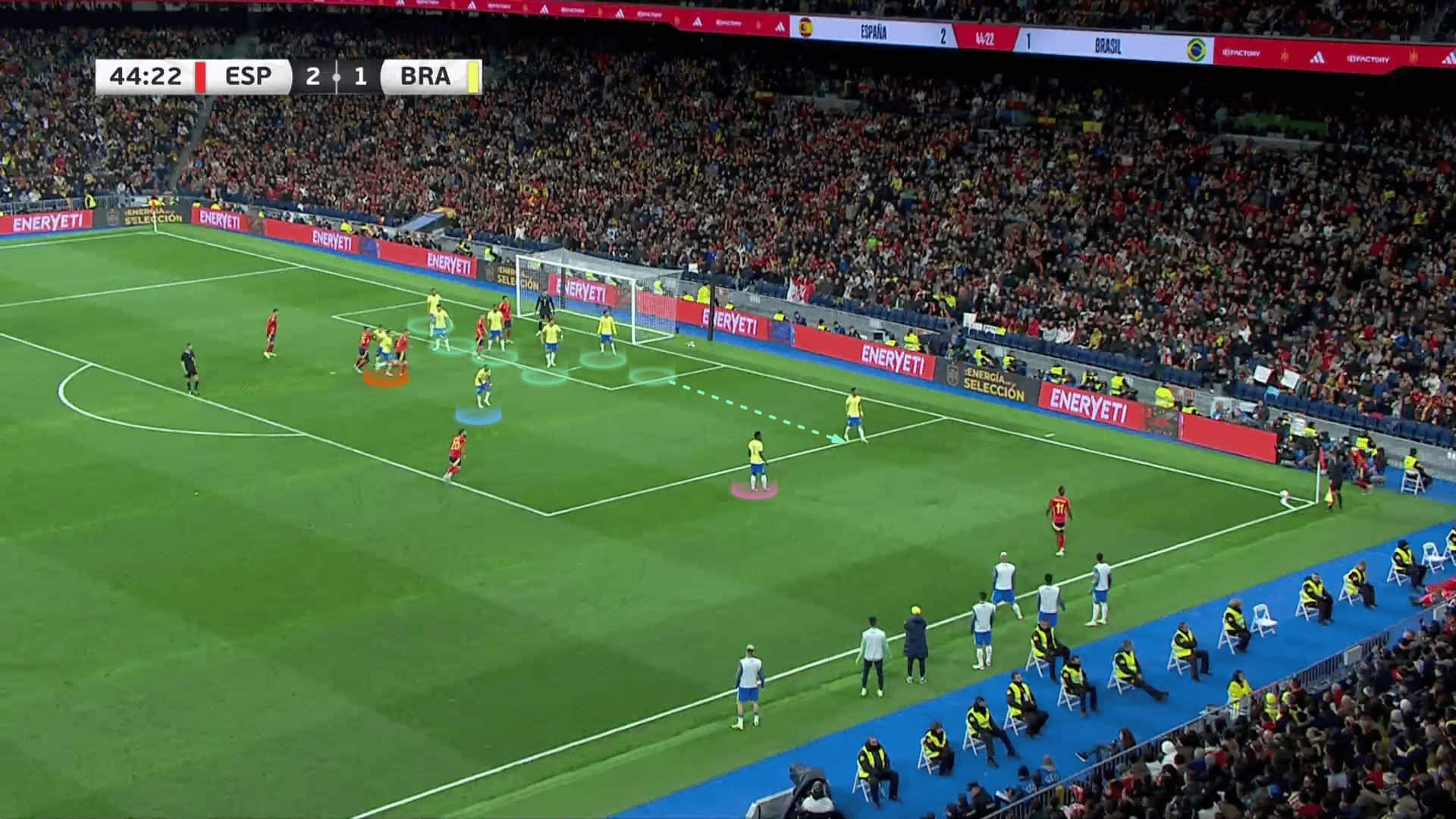
In this case, they are asked a new question: Who will defend the flick zone, then? They have the answer, which is to give the first zonal defender the freedom to chase the ball there while asking the one on the post to push forward to cover behind him to make sure that there aren’t any gaps on the near post, as shown in the two photos below.
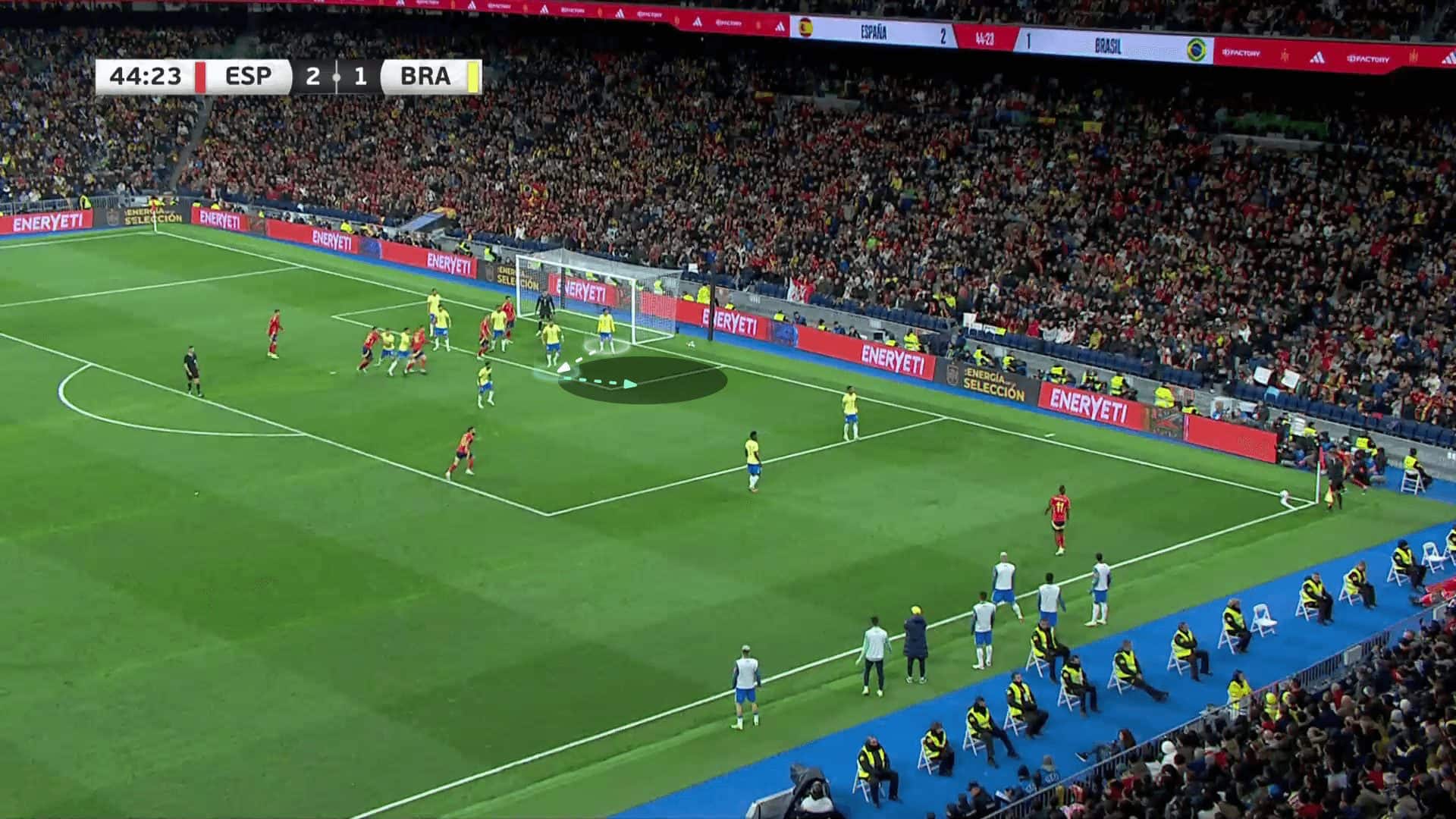

They have another approach to defend in this case when they are afraid of leaving the mentioned area empty, especially against teams that target it a lot. They ask this additional zonal defender to stay in his position, giving the rebound defender instructions to be closer to the short area. This makes the rebound area empty in case of any rebounded ball. Some teams may directly target the rebound zone, as shown in the photos below.
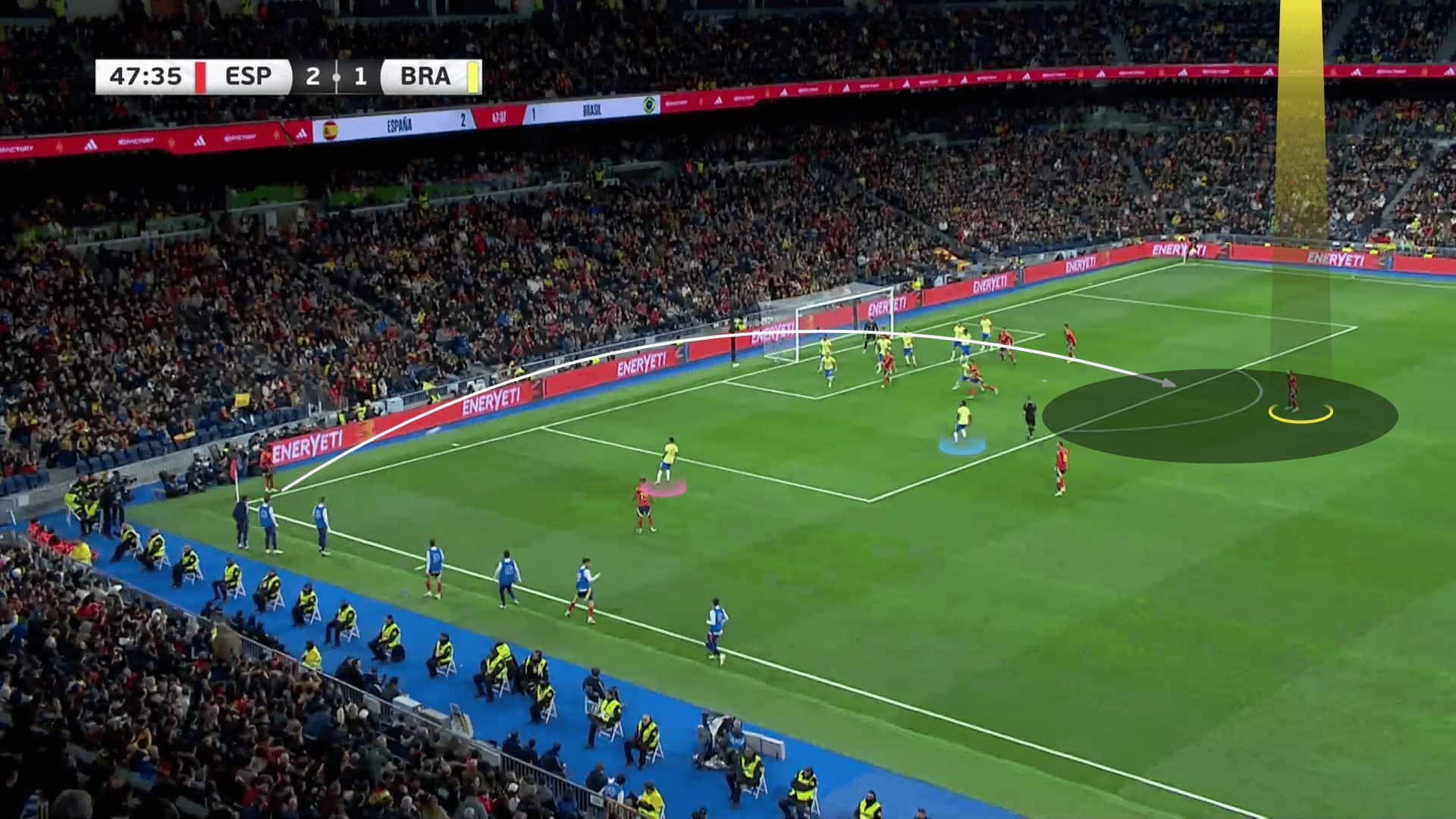
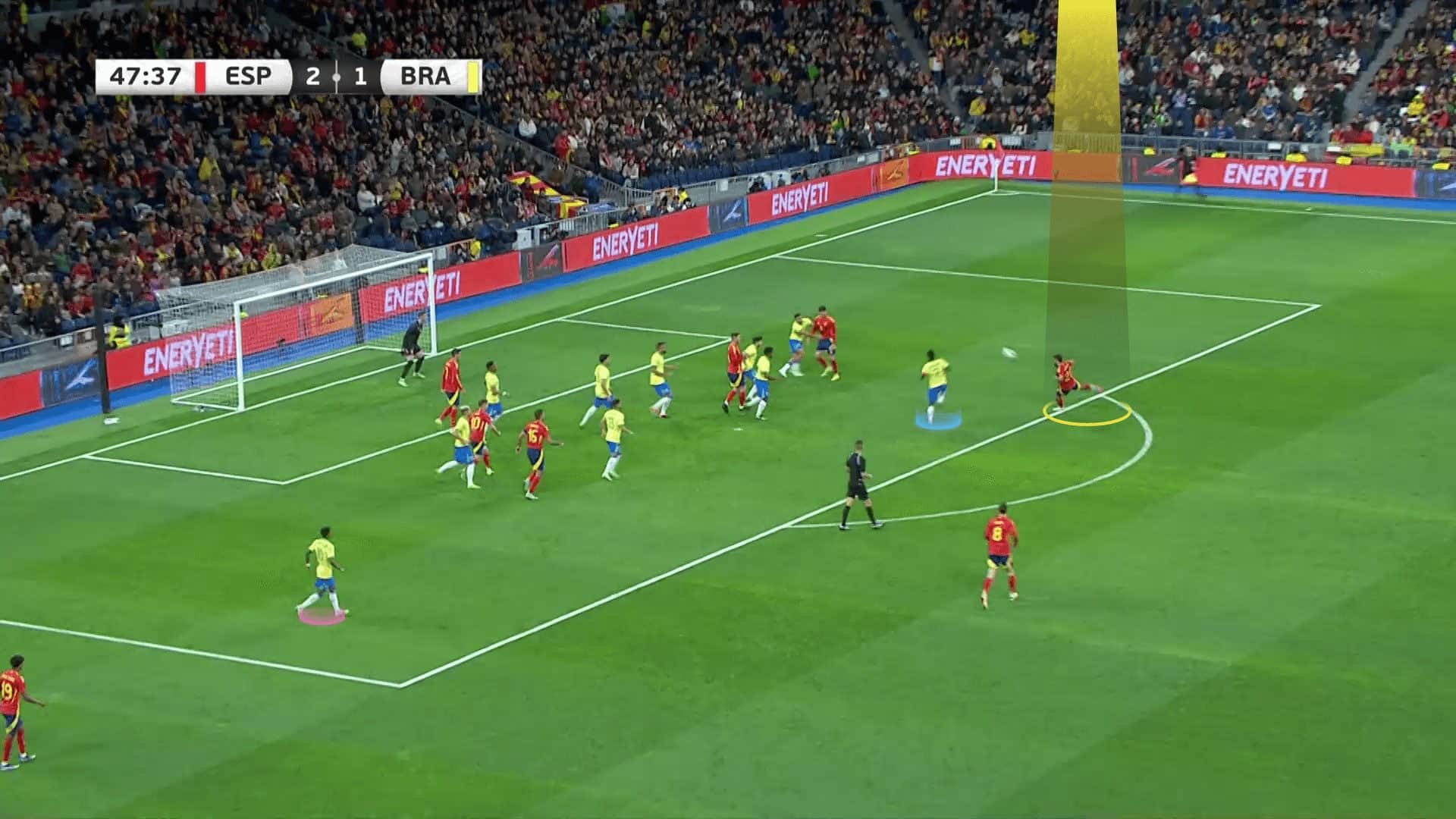
It leads to a chance in the end, but the goalkeeper saves it, as shown below.
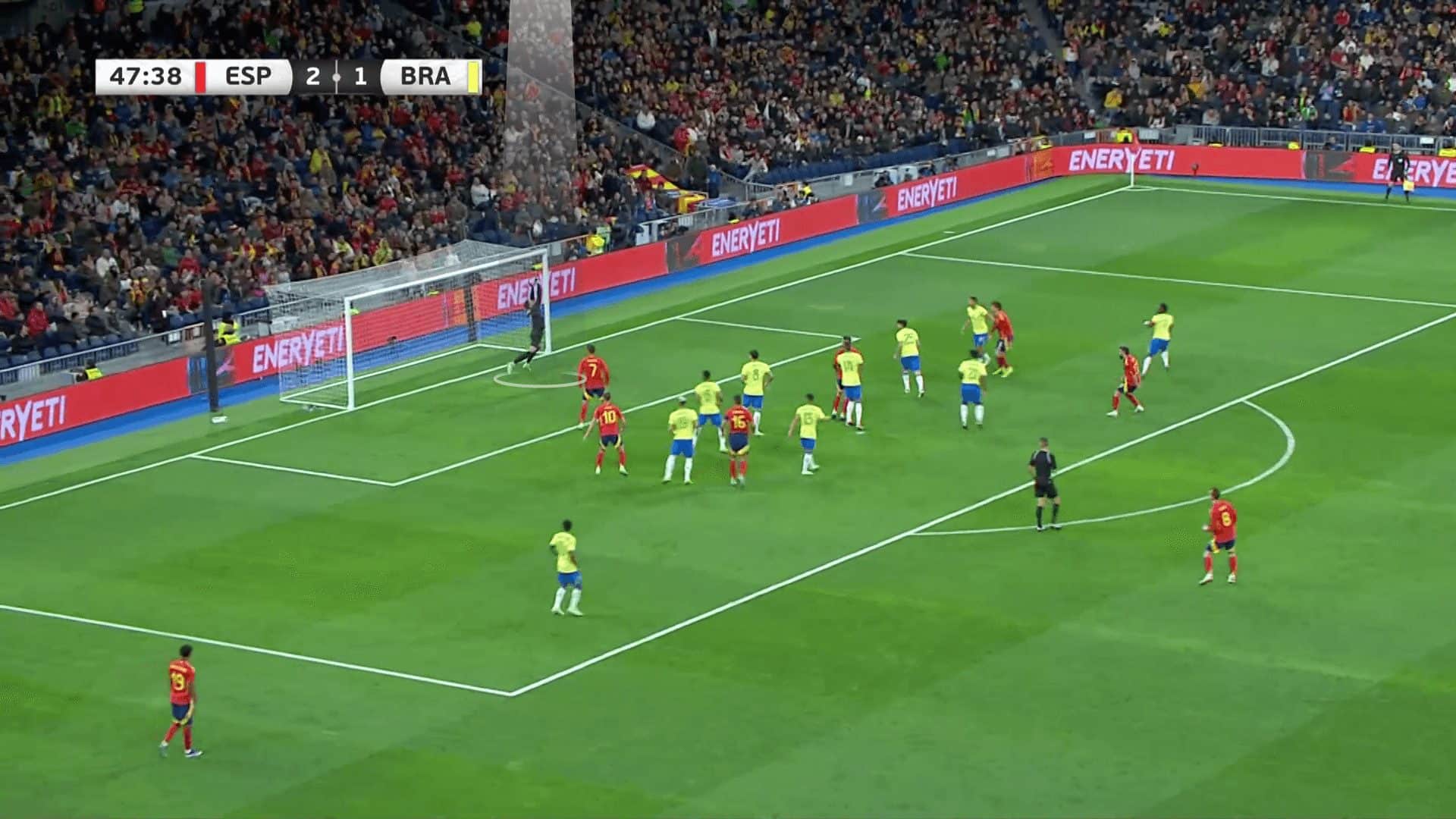
In the second case, the opponent doesn’t have short-option attackers at the beginning, which is more dangerous. Let’s know why!
In this case, they have three probabilities. Starting with the first one, the two short and rebound defenders stand on the edge of the box while the rebound defender is committed to his duty of standing in the rebound zone, giving no care to the attackers’ fights with the man markers, as shown in the two photos below.
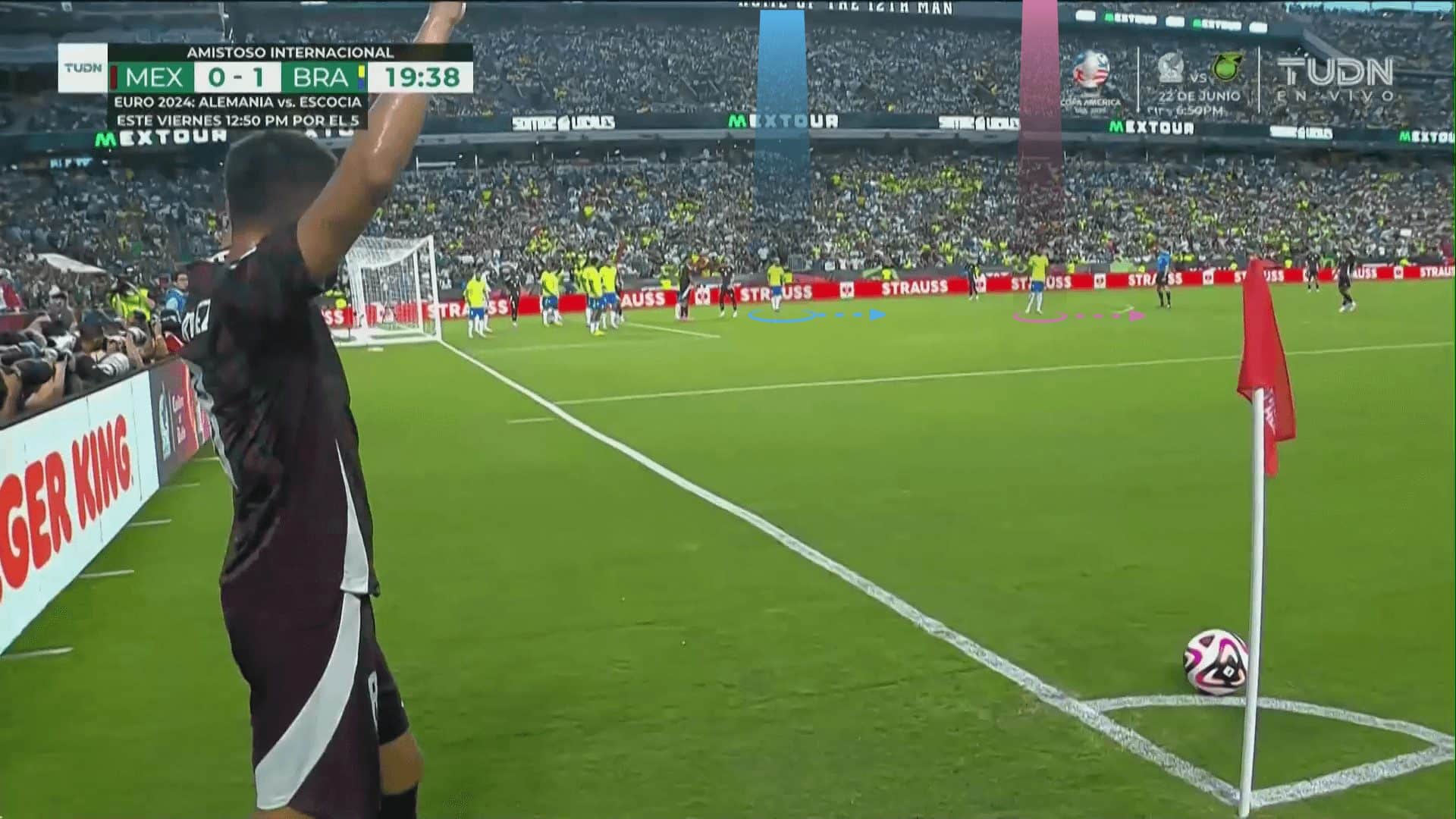
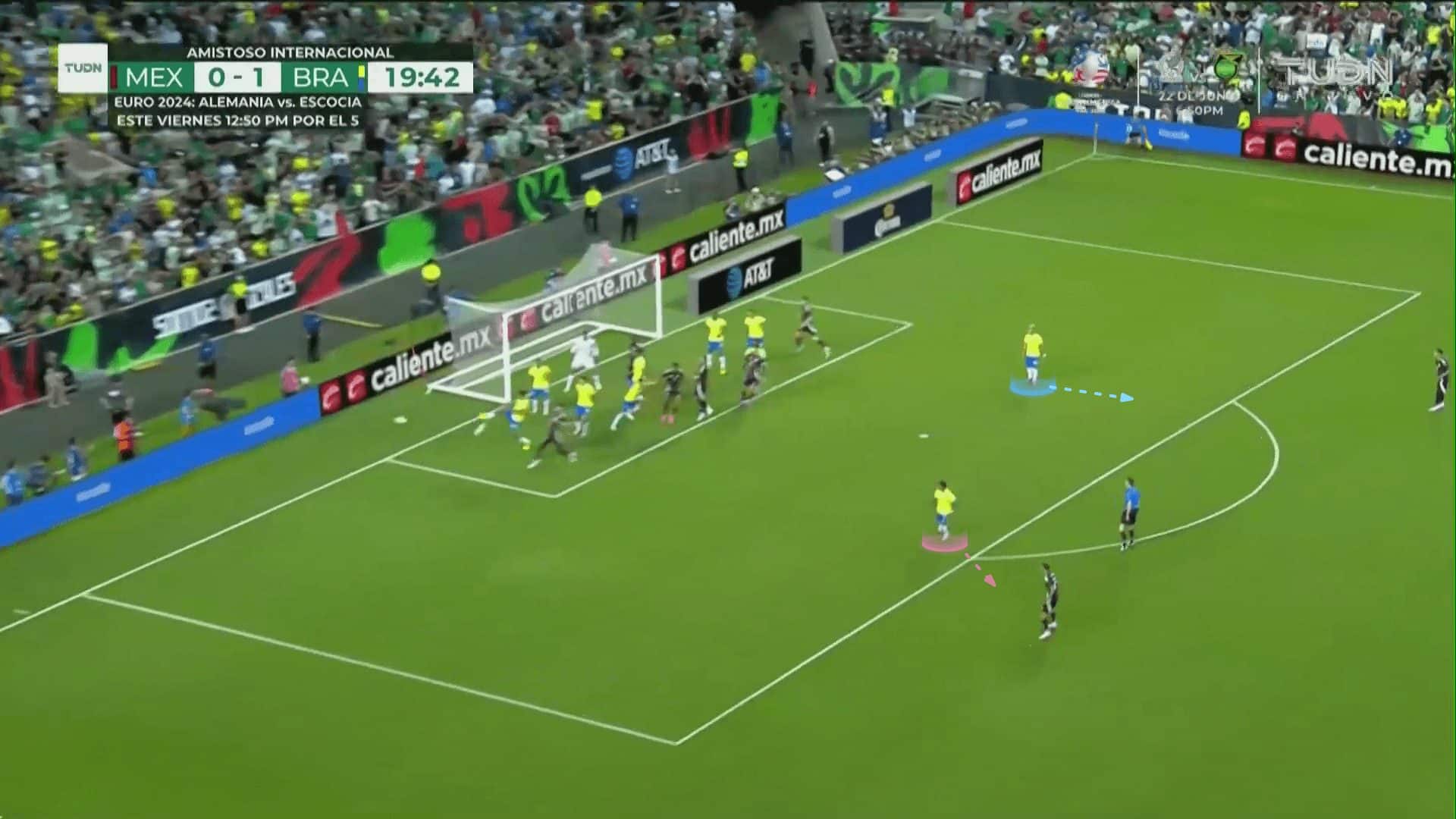
The second behavior is affected by the attackers’ numerical superiority over the man markers, especially when the two man markers are dragged away from the penalty spot empty, as shown below. So he stands in a middle position trying to help but without being far from the rebound zone at the same time. This is a weakness and a chance for opponents to target the area around the penalty spot.
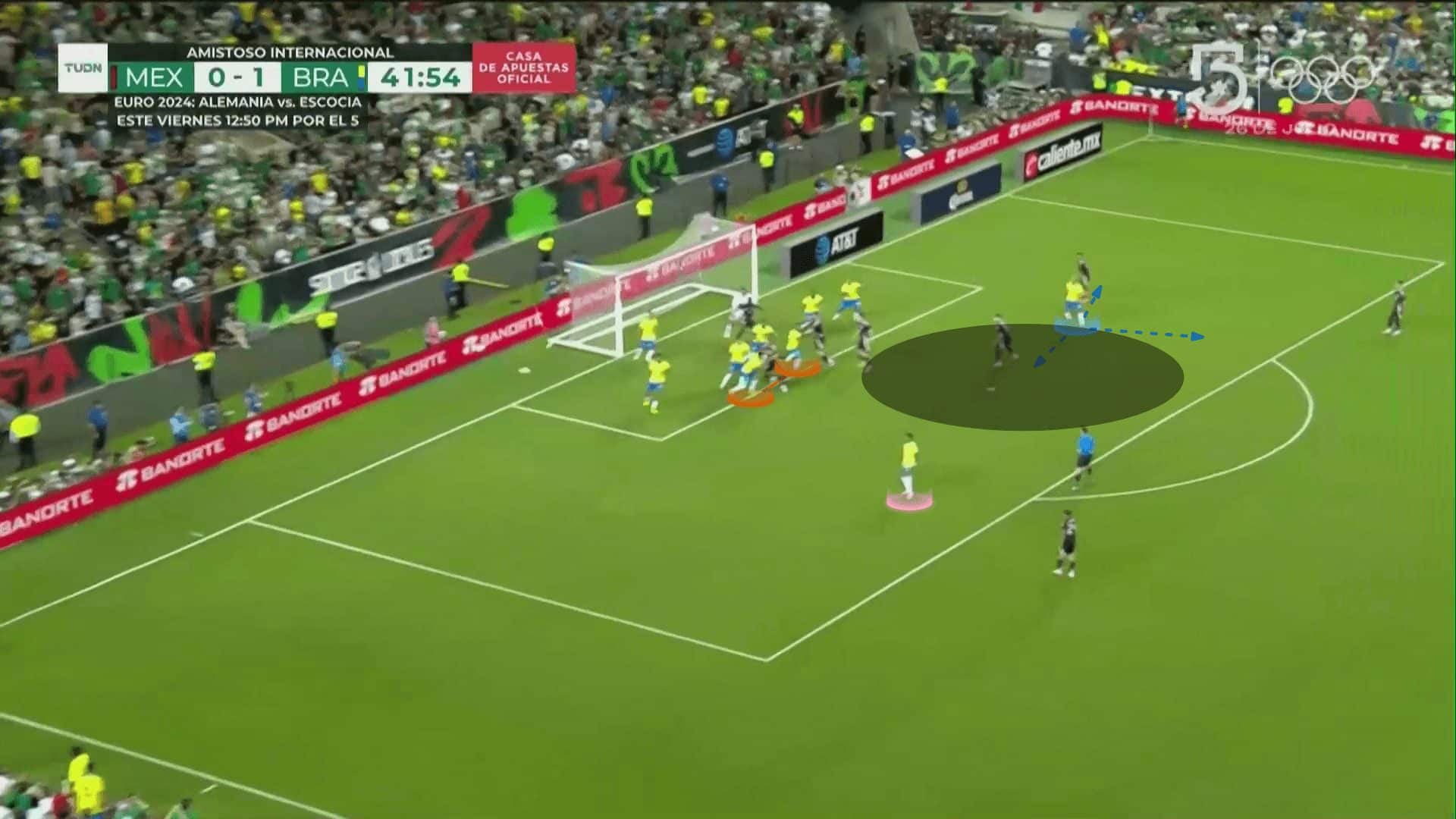
The third probability is to be dragged with the man markers acting as a third man marker, asking the short-option defender to stand in a middle position between the two opponents on the edge of the box to cover the rebound zone while being able to go to defend the short pass, as shown below.
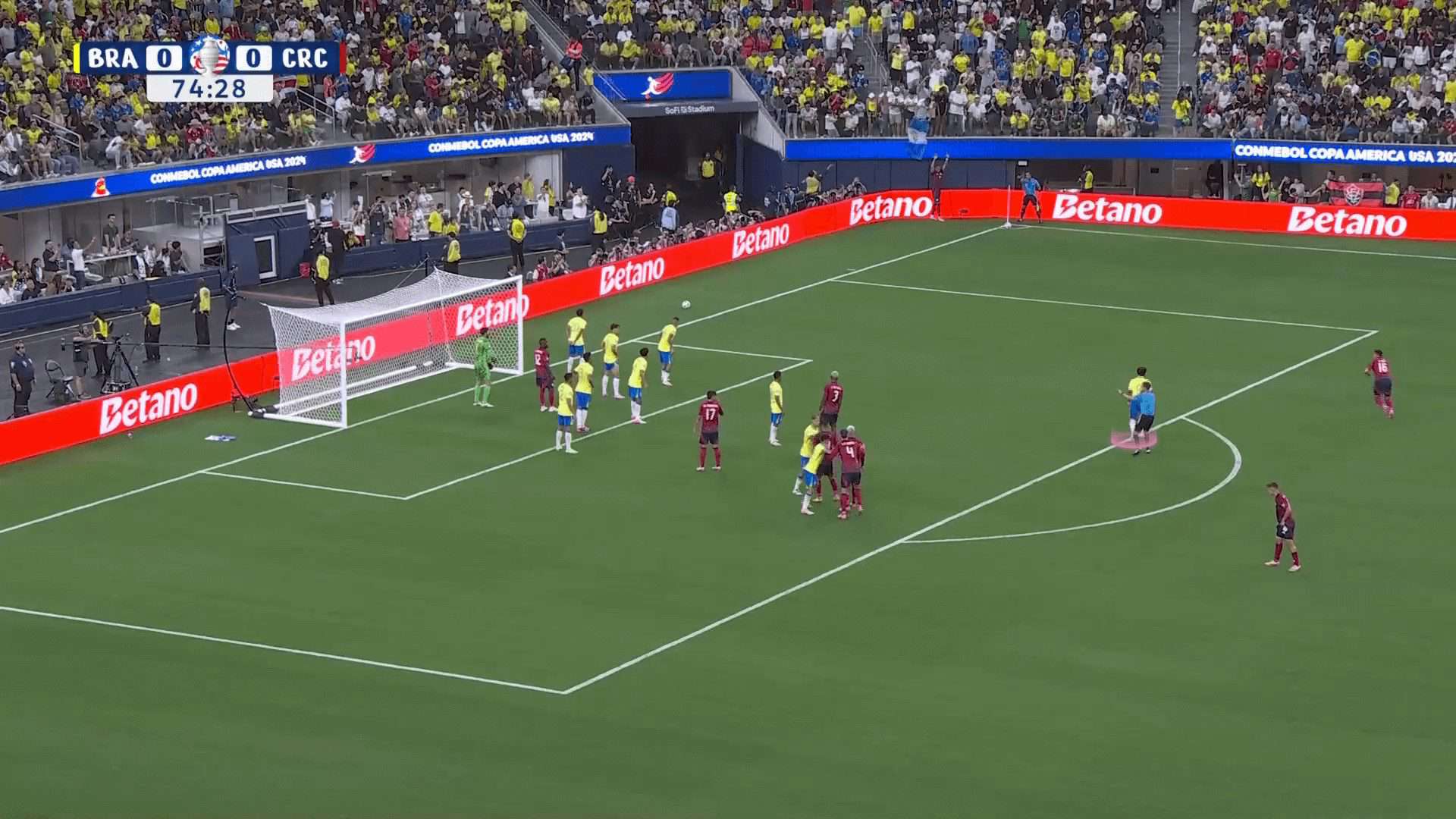
Regarding this point, we think the best choice, as an opponent, is to start without short-option attackers, as Newcastle United did in the case below. In the first photo, the first attacker on the edge of the box quickly receives the pass and only touches it back again to the taker, only to drag the short-option defender with him, knowing that the blue rebound defender acts as a man marker dragged into the box. In the second photo, the taker passes the ball to the empty rebound zone while all of the necessary blocks are done, as in the third and fourth photos. The end is a dangerous chance.
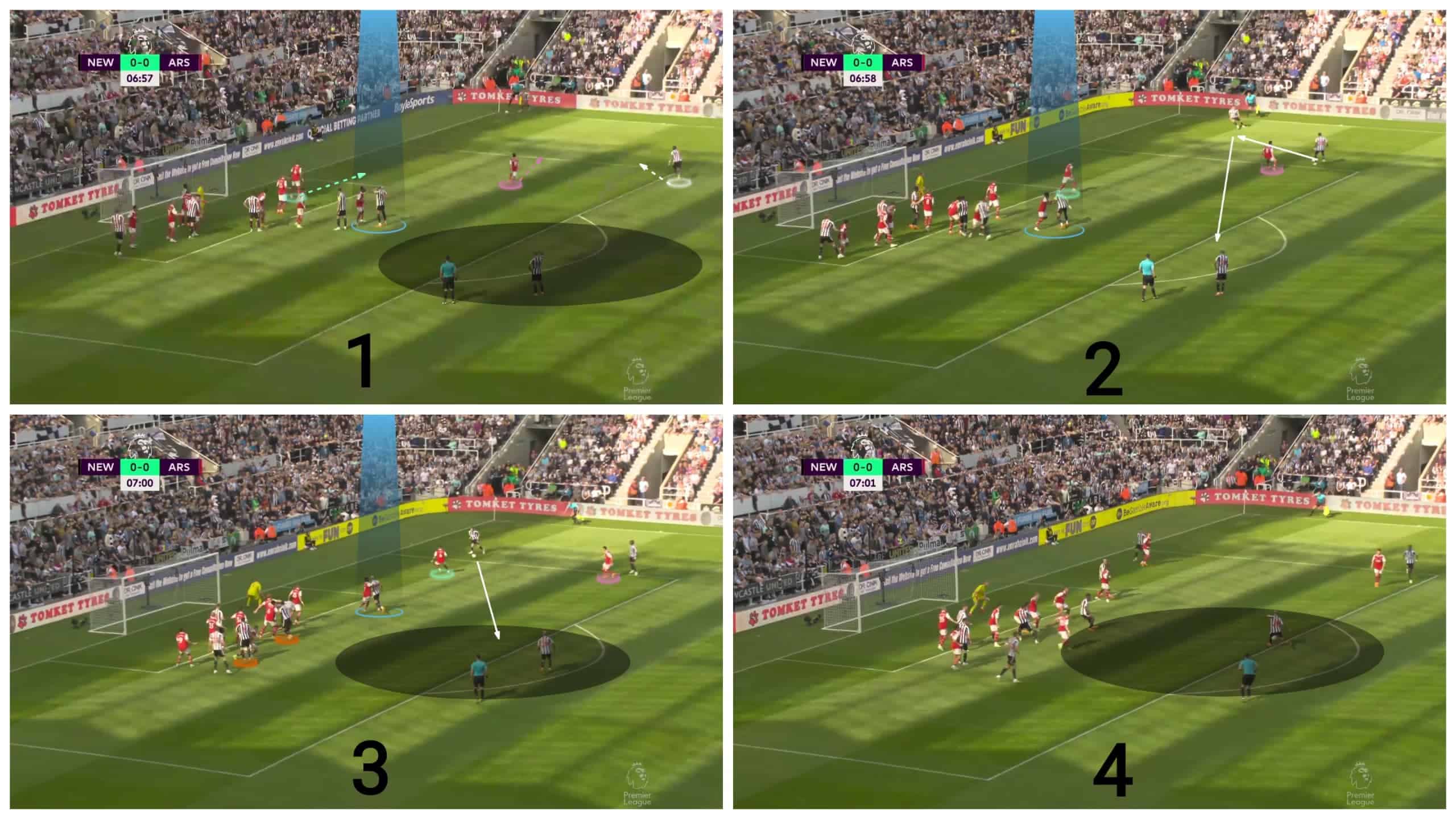
And now our journey as Brazil’s opponent analysis team has ended!
Conclusion
In this analysis, we have dissected Brazil’s scheme in defending corners showing all of their strengths and how it is difficult for opponents to get through it because of their hybrid system which protects the six-yard well.
In this set-piece analysis, we have also mentioned the probable weaknesses in this scheme, showing how opponents can exploit them. Using two takers, an in-swinger and an out-swinger, and exploiting their unclear strategy to defend the rebound zone in different cases can help the opponents get through them.






Comments